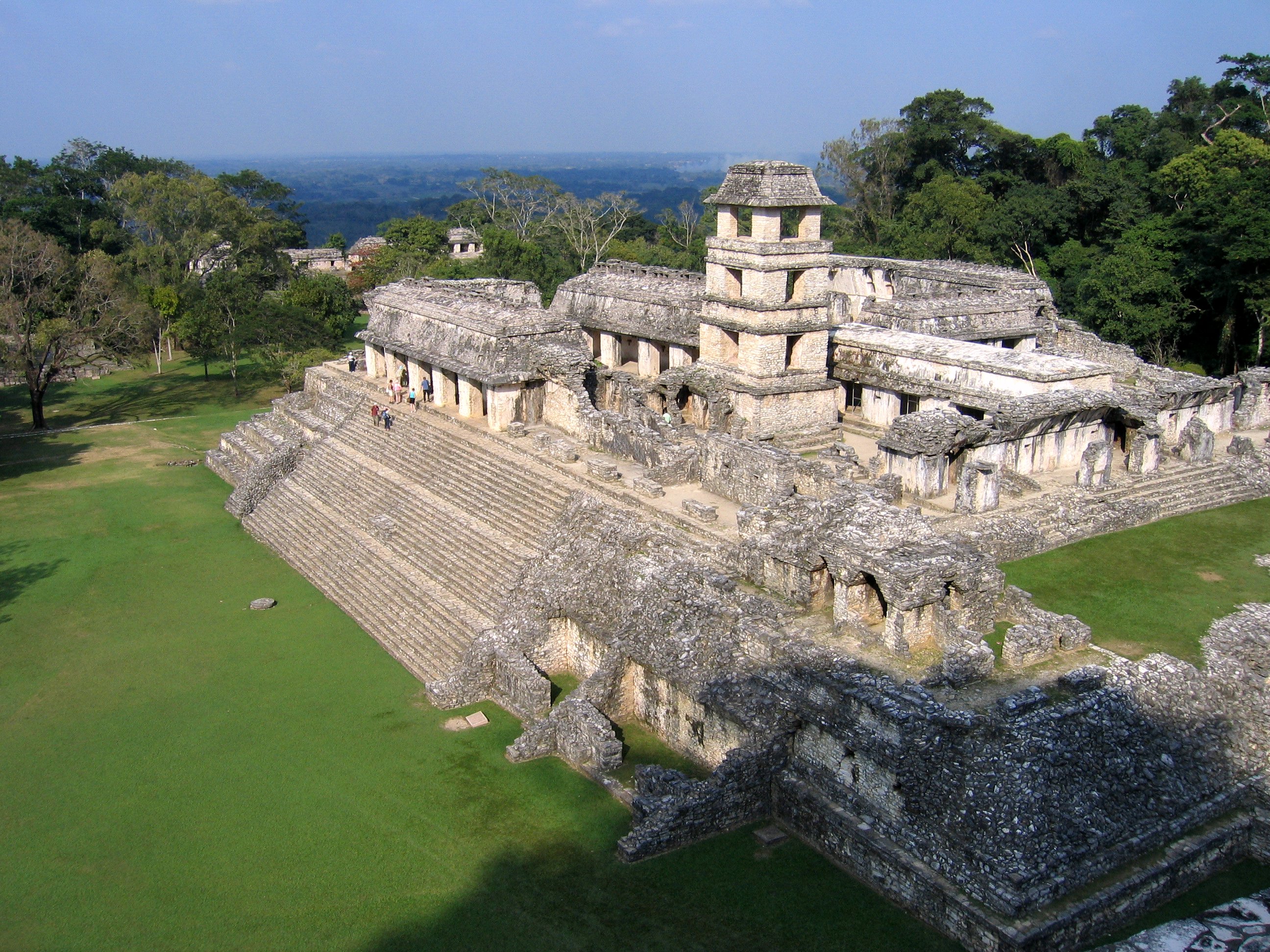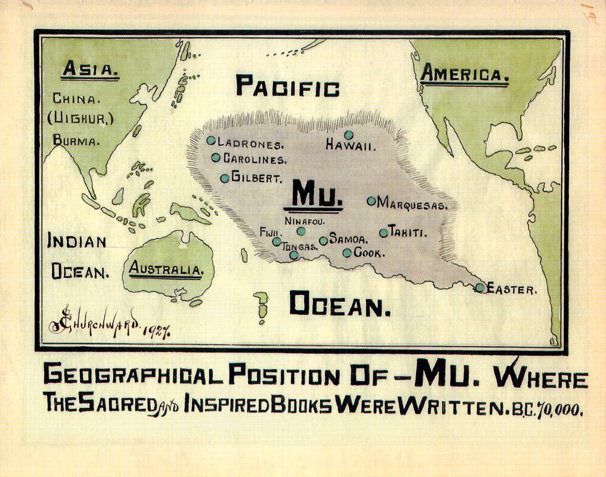|
Roof Comb
Roof comb (or roof-comb) is the structure that tops a pyramid in monumental Mesoamerican architecture. Examination of the sections and iconography of Maya civilization roof-combs indicates that each icon had specific sacred meanings. Typically, the roof combs crowned the summit of pyramids and other structures; they consisted of two pierced framework walls which leaned on one another. This framework was covered by plaster decorated with artist depictions of gods or important rulers. History and significance The Mayans engineered some of the most important monuments in Mesoamerica. Their civilization experienced its ‘golden age’ between 500 and 900 AD. Recent deciphering of Maya hieroglyphs has brought new understanding to their architecture; these pictographic symbols tell historians about when specific structures were built and by whom. In Mayan religious architecture there was an emphasis on height, which was often manifested by vertiginous staircases that reached towar ... [...More Info...] [...Related Items...] OR: [Wikipedia] [Google] [Baidu] |
Mesoamerican Architecture
Mesoamerican architecture is the set of architectural traditions produced by pre-Columbian cultures and civilizations of Mesoamerica, traditions which are best known in the form of public, ceremonial and urban monumental buildings and structures. The distinctive features of Mesoamerican architecture encompass a number of different regional and historical styles, which however are significantly interrelated. These styles developed throughout the different phases of Mesoamerican history as a result of the intensive cultural exchange between the different cultures of the Mesoamerican culture area through thousands of years. Mesoamerican architecture is mostly noted for its pyramids, which are the largest such structures outside of Ancient Egypt. One interesting and widely researched topic is the relation between cosmovision, religion, geography, and architecture in Mesoamerica. Much seems to suggest that many traits of Mesoamerican architecture were governed by religious and mytho ... [...More Info...] [...Related Items...] OR: [Wikipedia] [Google] [Baidu] |
Maya Civilization
The Maya civilization () of the Mesoamerican people is known by its ancient temples and glyphs. Its Maya script is the most sophisticated and highly developed writing system in the pre-Columbian Americas. It is also noted for its art, architecture, mathematics, calendar, and astronomical system. The Maya civilization developed in the Maya Region, an area that today comprises southeastern Mexico, all of Guatemala and Belize, and the western portions of Honduras and El Salvador. It includes the northern lowlands of the Yucatán Peninsula and the highlands of the Sierra Madre, the Mexican state of Chiapas, southern Guatemala, El Salvador, and the southern lowlands of the Pacific littoral plain. Today, their descendants, known collectively as the Maya, number well over 6 million individuals, speak more than twenty-eight surviving Mayan languages, and reside in nearly the same area as their ancestors. The Archaic period, before 2000 BC, saw the first developments in agricul ... [...More Info...] [...Related Items...] OR: [Wikipedia] [Google] [Baidu] |
Pyramids
A pyramid (from el, πυραμίς ') is a structure whose outer surfaces are triangular and converge to a single step at the top, making the shape roughly a pyramid in the geometric sense. The base of a pyramid can be trilateral, quadrilateral, or of any polygon shape. As such, a pyramid has at least three outer triangular surfaces (at least four faces including the base). The square pyramid, with a square base and four triangular outer surfaces, is a common version. A pyramid's design, with the majority of the weight closer to the ground and with the pyramidion at the apex, means that less material higher up on the pyramid will be pushing down from above. This distribution of weight allowed early civilizations to create stable monumental structures. Civilizations in many parts of the world have built pyramids. The largest pyramid by volume is the Great Pyramid of Cholula, in the Mexican state of Puebla. For thousands of years, the largest structures on Earth were pyramid ... [...More Info...] [...Related Items...] OR: [Wikipedia] [Google] [Baidu] |
Plaster
Plaster is a building material used for the protective or decorative coating of walls and ceilings and for Molding (decorative), moulding and casting decorative elements. In English, "plaster" usually means a material used for the interiors of buildings, while "render" commonly refers to external applications. Another imprecise term used for the material is stucco, which is also often used for plasterwork that is worked in some way to produce relief decoration, rather than flat surfaces. The most common types of plaster mainly contain either gypsum, lime plaster, lime, or cement plaster, cement,Franz Wirsching "Calcium Sulfate" in Ullmann's Encyclopedia of Industrial Chemistry, 2012 Wiley-VCH, Weinheim. but all work in a similar way. The plaster is manufactured as a dry powder and is mixed with water to form a stiff but workable paste immediately before it is applied to the surface. The reaction with water liberates heat through crystallization and the hydrated plaster then ha ... [...More Info...] [...Related Items...] OR: [Wikipedia] [Google] [Baidu] |
Mesoamerica
Mesoamerica is a historical region and cultural area in southern North America and most of Central America. It extends from approximately central Mexico through Belize, Guatemala, El Salvador, Honduras, Nicaragua, and northern Costa Rica. Within this region pre-Columbian societies flourished for more than 3,000 years before the Spanish colonization of the Americas. Mesoamerica was the site of two of the most profound historical transformations in world history: primary urban generation, and the formation of New World cultures out of the long encounters among indigenous, European, African and Asian cultures. In the 16th century, Eurasian diseases such as smallpox and measles, which were endemic among the colonists but new to North America, caused the deaths of upwards of 90% of the indigenous people, resulting in great losses to their societies and cultures. Mesoamerica is one of the five areas in the world where ancient civilization arose independently (see cradle of civ ... [...More Info...] [...Related Items...] OR: [Wikipedia] [Google] [Baidu] |
Golden Age (metaphor)
A golden age is a period considered the apotheosis in the history of a country or people, a time period when the greatness, greatest achievements were made. The term originated from early ancient Greece, Greek and ancient Rome, Roman poets, who used it to refer to a time when mankind lived in a better time and was pure (see Golden Age). The ancient Greek philosopher Hesiod introduced the term in his ''Works and Days'', when referring to the period when the "Golden Race" of man lived. This was part of fivefold division of Ages of Man, starting with the Golden age, then the Silver Age, the Bronze Age, the Greek Heroic Age, Age of Heroes (including the Trojan War), and finally, the current Iron Age. The concept was further refined by Ovid, in his ''Metamorphoses'', into the four "metal ages" (golden, silver, bronze, and iron). The Golden age in Classic literature The Golden age as described by Hesiod was an age where all humans were created directly by the Olympian gods. They d ... [...More Info...] [...Related Items...] OR: [Wikipedia] [Google] [Baidu] |
Hieroglyphs
A hieroglyph (Greek for "sacred carvings") was a character of the ancient Egyptian writing system. Logographic scripts that are pictographic in form in a way reminiscent of ancient Egyptian are also sometimes called "hieroglyphs". In Neoplatonism, especially during the Renaissance, a "hieroglyph" was an artistic representation of an esoteric idea, which Neoplatonists believed actual Egyptian hieroglyphs to be. The word ''hieroglyphics'' refers to a hieroglyphic script. The Egyptians invented the pictorial script, which refers to any writing system that employs images as symbols for various semantic entities, rather than the abstract signs used by alphabets. The appearance of these distinctive figures in 3000 BCE marked the beginning of Egyptian civilization. Though based on images, Egyptian script was more than a sophisticated form of picture-writing. Each picture/ glyph served one of three functions: (1) to represent the image of a thing or action, (2) to stand for a sound or ... [...More Info...] [...Related Items...] OR: [Wikipedia] [Google] [Baidu] |
Temples
A temple (from the Latin ) is a building reserved for spiritual rituals and activities such as prayer and sacrifice. Religions which erect temples include Christianity (whose temples are typically called churches), Hinduism (whose temples are called Mandir), Buddhism, Sikhism (whose temples are called gurudwara), Jainism (whose temples are sometimes called derasar), Islam (whose temples are called mosques), Judaism (whose temples are called synagogues), Zoroastrianism (whose temples are sometimes called Agiary), the Baha'i Faith (which are often simply referred to as Baha'i House of Worship), Taoism (which are sometimes called Daoguan), Shinto (which are sometimes called Jinja), Confucianism (which are sometimes called the Temple of Confucius), and ancient religions such as the Ancient Egyptian religion and the Ancient Greek religion. The form and function of temples are thus very variable, though they are often considered by believers to be, in some sense, the "house" ... [...More Info...] [...Related Items...] OR: [Wikipedia] [Google] [Baidu] |
Maya Society
Maya society concerns the social organization of the Pre-Hispanic Maya, its political structures, and social classes. The Maya people were indigenous to Mexico and Central America and the most dominant people groups of Central America up until the 6th century. In the Neolithic Age, Maya society has contributed to the fields of astronomy, mathematics, agriculture, art and writing. They are people who excelled in these areas. Most of the great cities of the Maya were abandoned by A.D. 900. The Maya lived in Mesoamerica, concentrated in the Yucantan Peninsula, the Peten district of northern Guatemala and southern Mexico. The Maya reached the height of their civilization during the Classic Period of Maya civilization (A.D 250 to 900) before a decline starting about 900 AD. The Maya Civilization, centered in these tropical lands, reached their peak of power and influence around the sixth century. The Maya practiced body modification, including cranium modification, dental modification ... [...More Info...] [...Related Items...] OR: [Wikipedia] [Google] [Baidu] |
Corbel Arch
A corbel arch (or corbeled / corbelled arch) is an arch-like construction method that uses the architectural technique of corbeling to span a space or void in a structure, such as an entranceway in a wall or as the span of a bridge. A corbel vault uses this technique to support the superstructure of a building's roof. A corbel arch is constructed by offsetting successive horizontal courses of stone (or brick) beginning at the springline of the walls (the point at which the walls break off from verticality to form an arc toward the apex at the archway's center) so that they project towards the archway's center from each supporting side, until the courses meet at the apex of the archway (often, the last gap is bridged with a flat stone). For a corbeled vault covering, the technique is extended in three dimensions along the lengths of two opposing walls. Although an improvement in load-bearing efficiency over the post and lintel design, corbeled arches are not entirely self-suppo ... [...More Info...] [...Related Items...] OR: [Wikipedia] [Google] [Baidu] |






